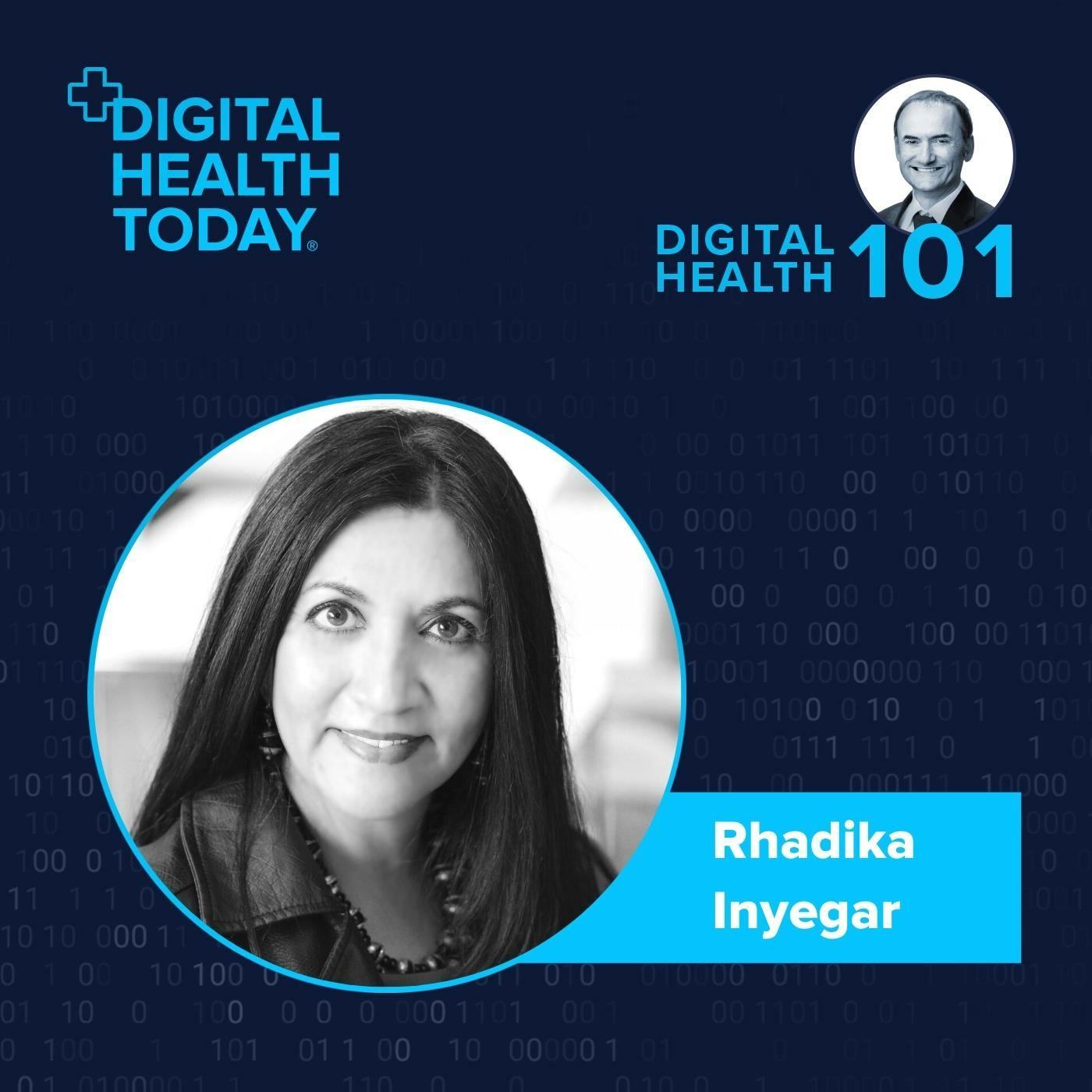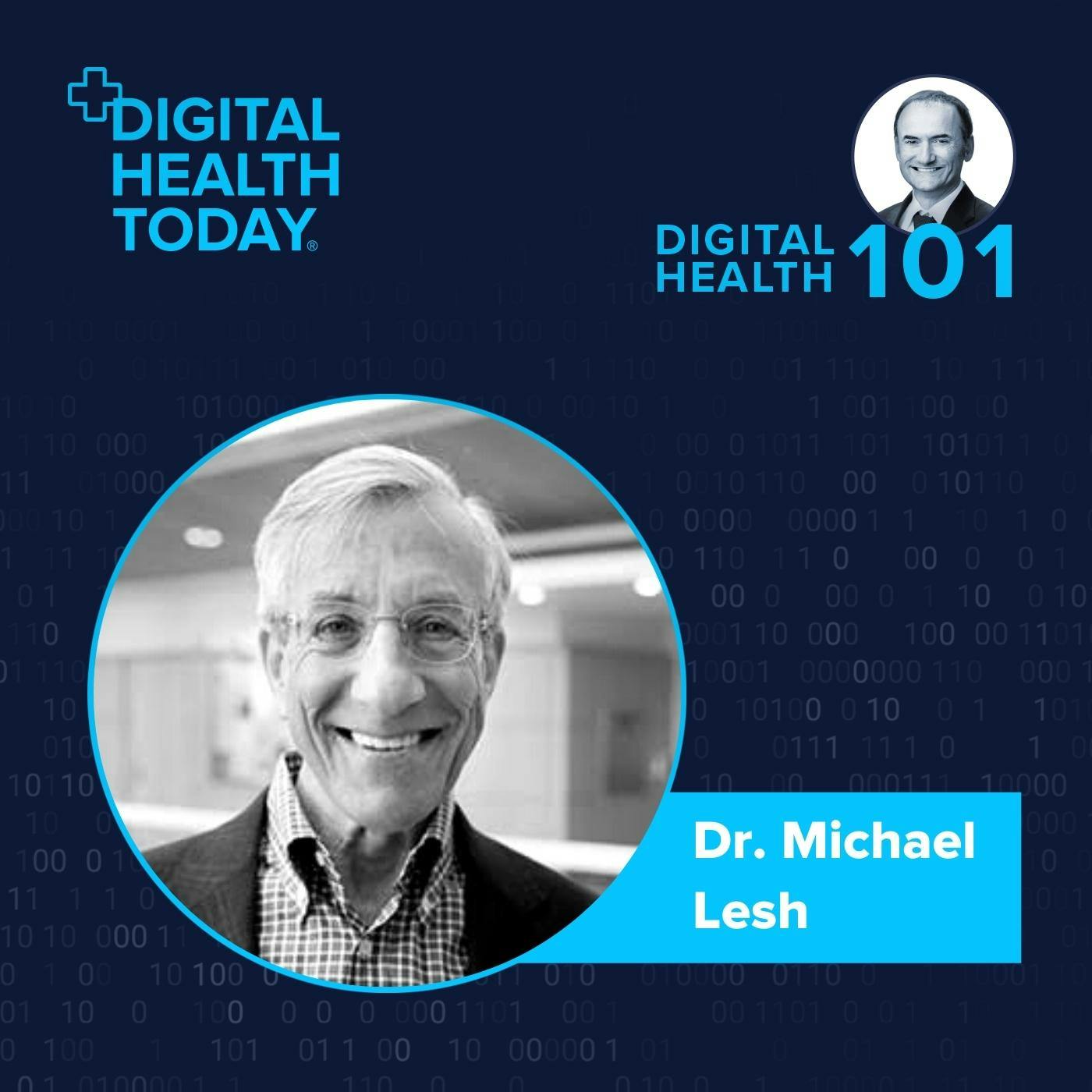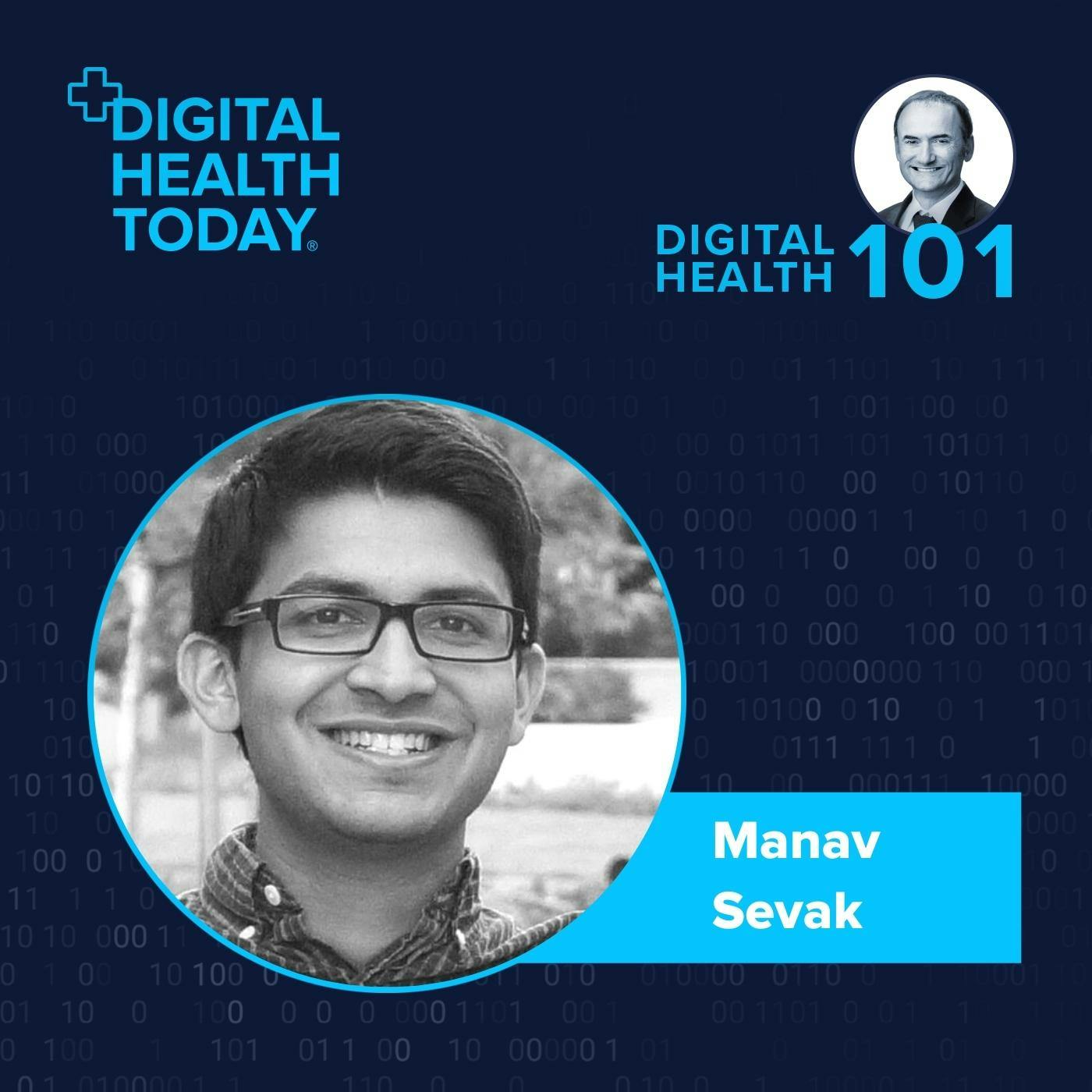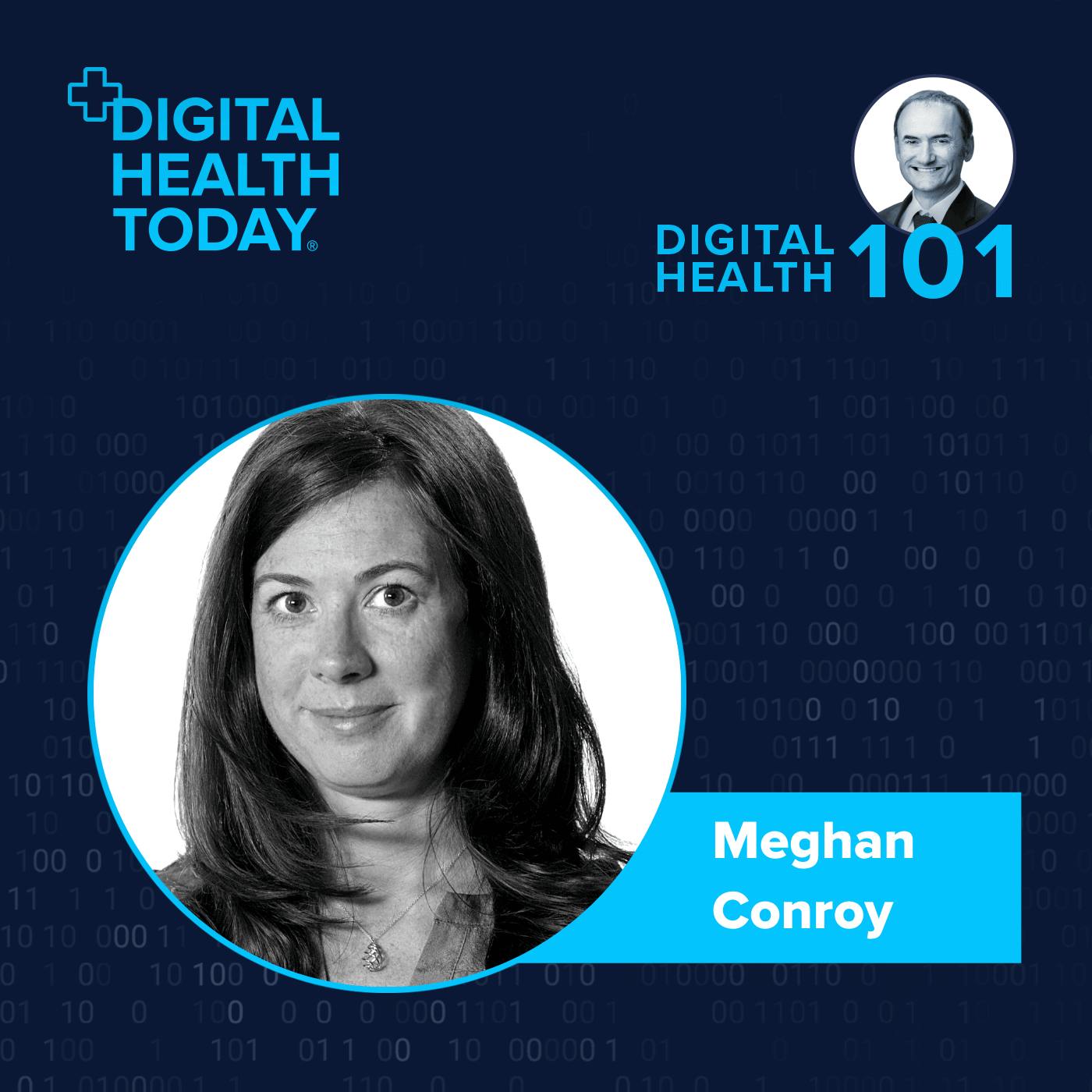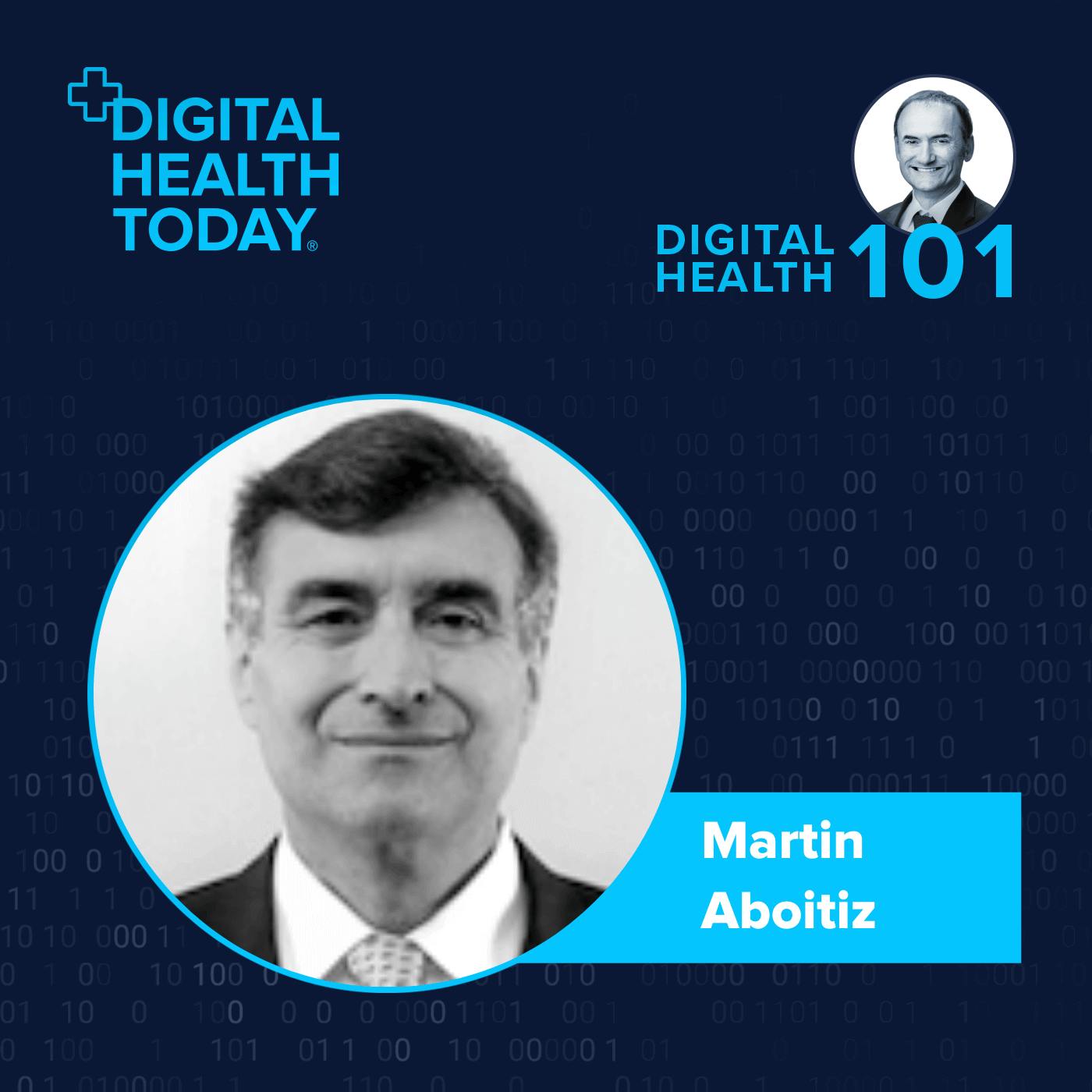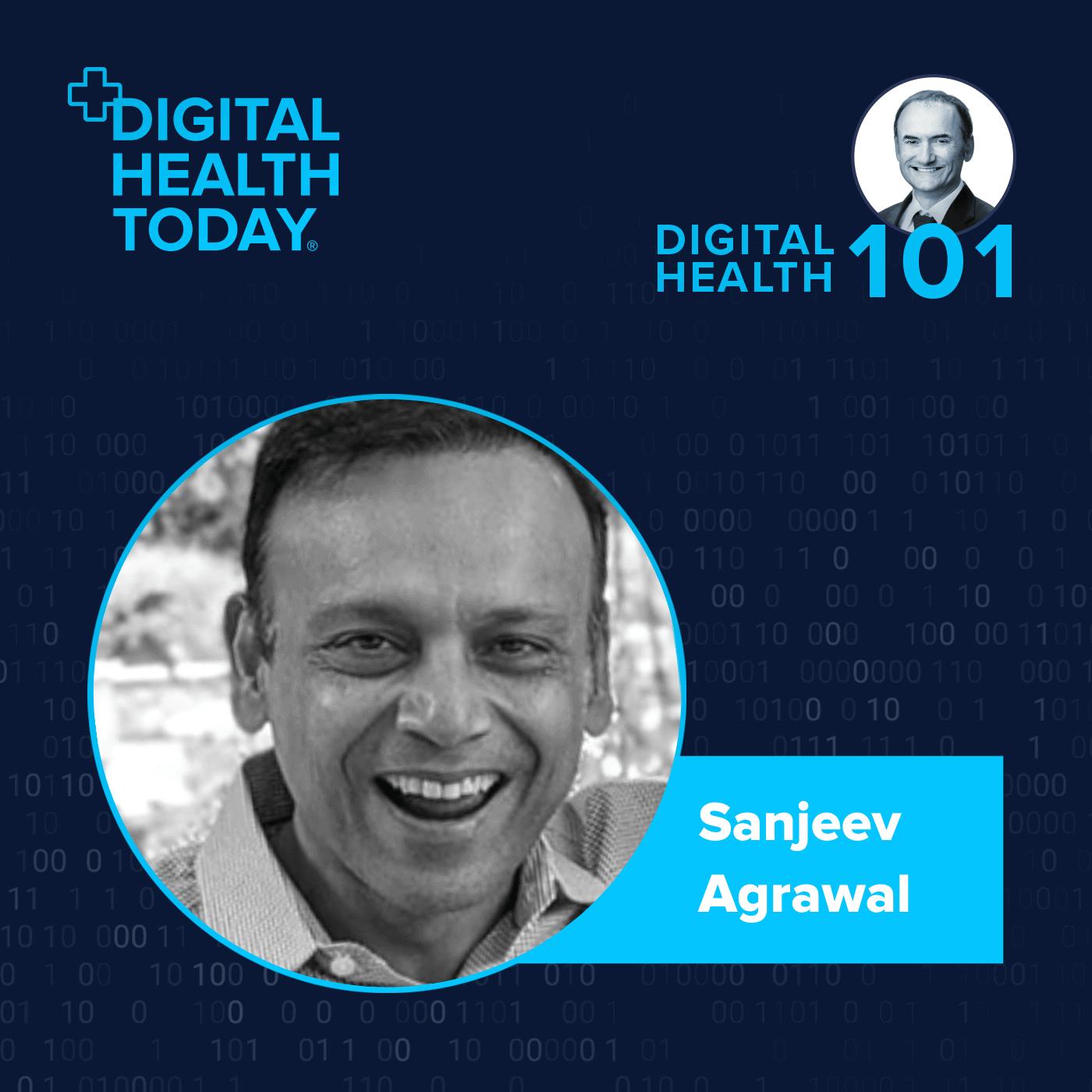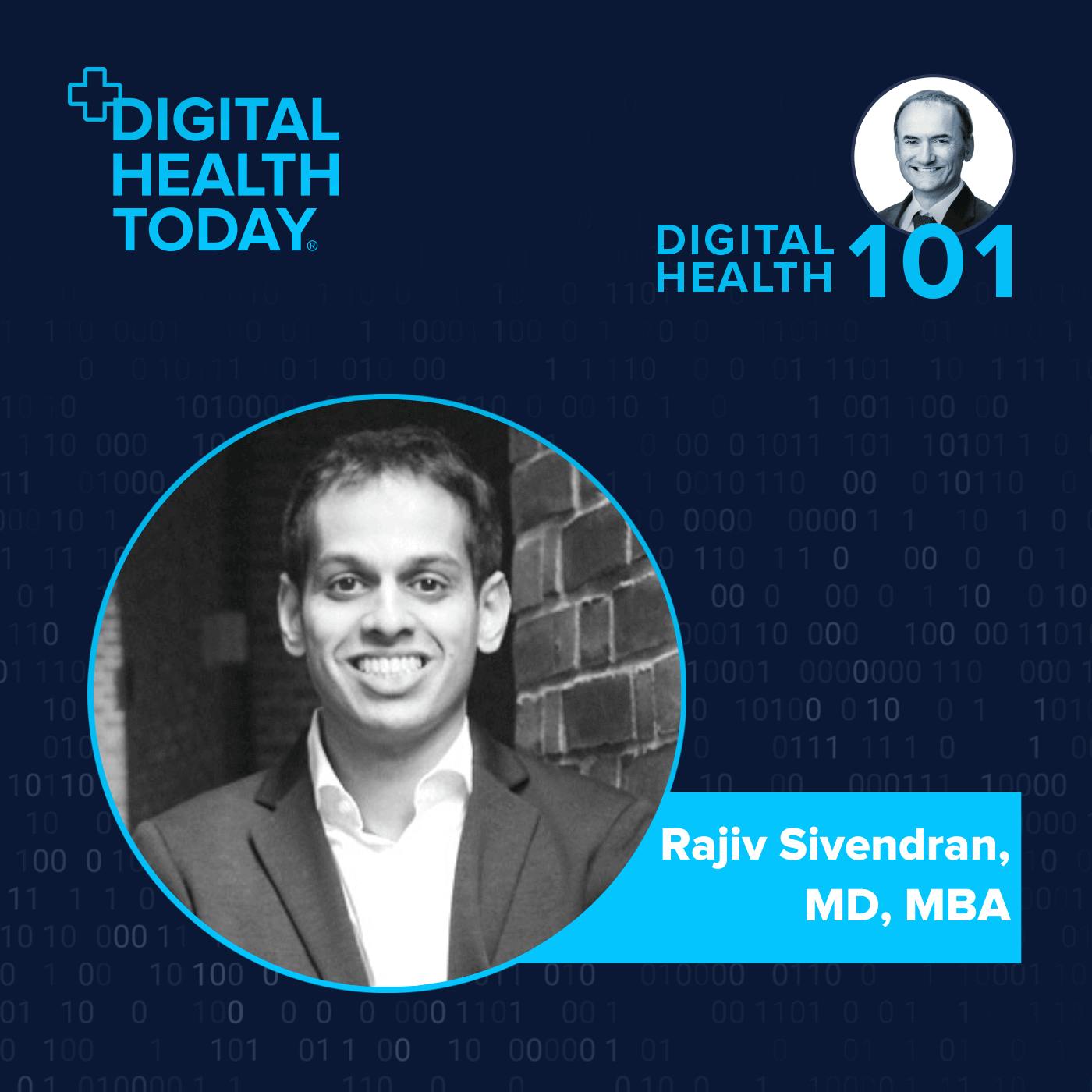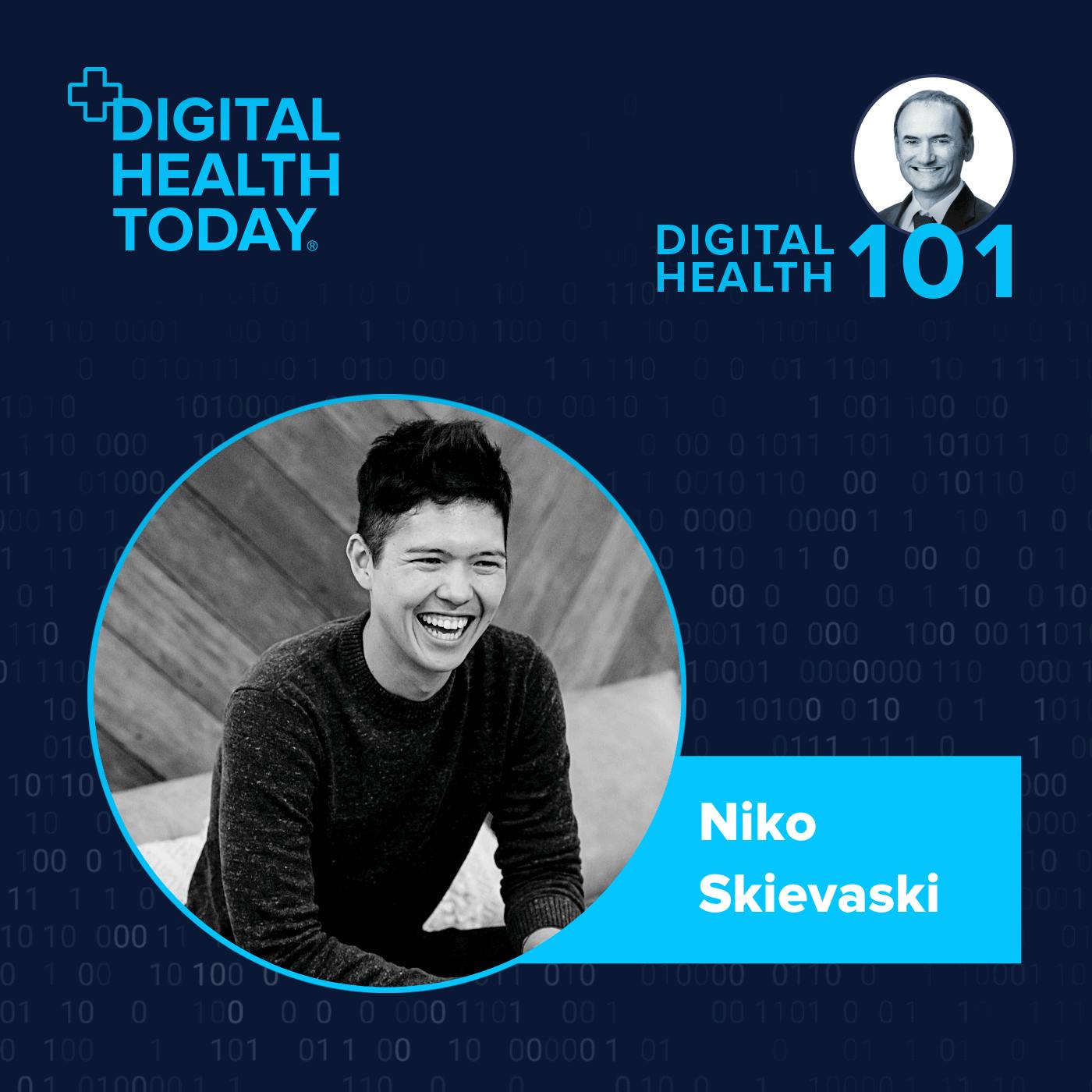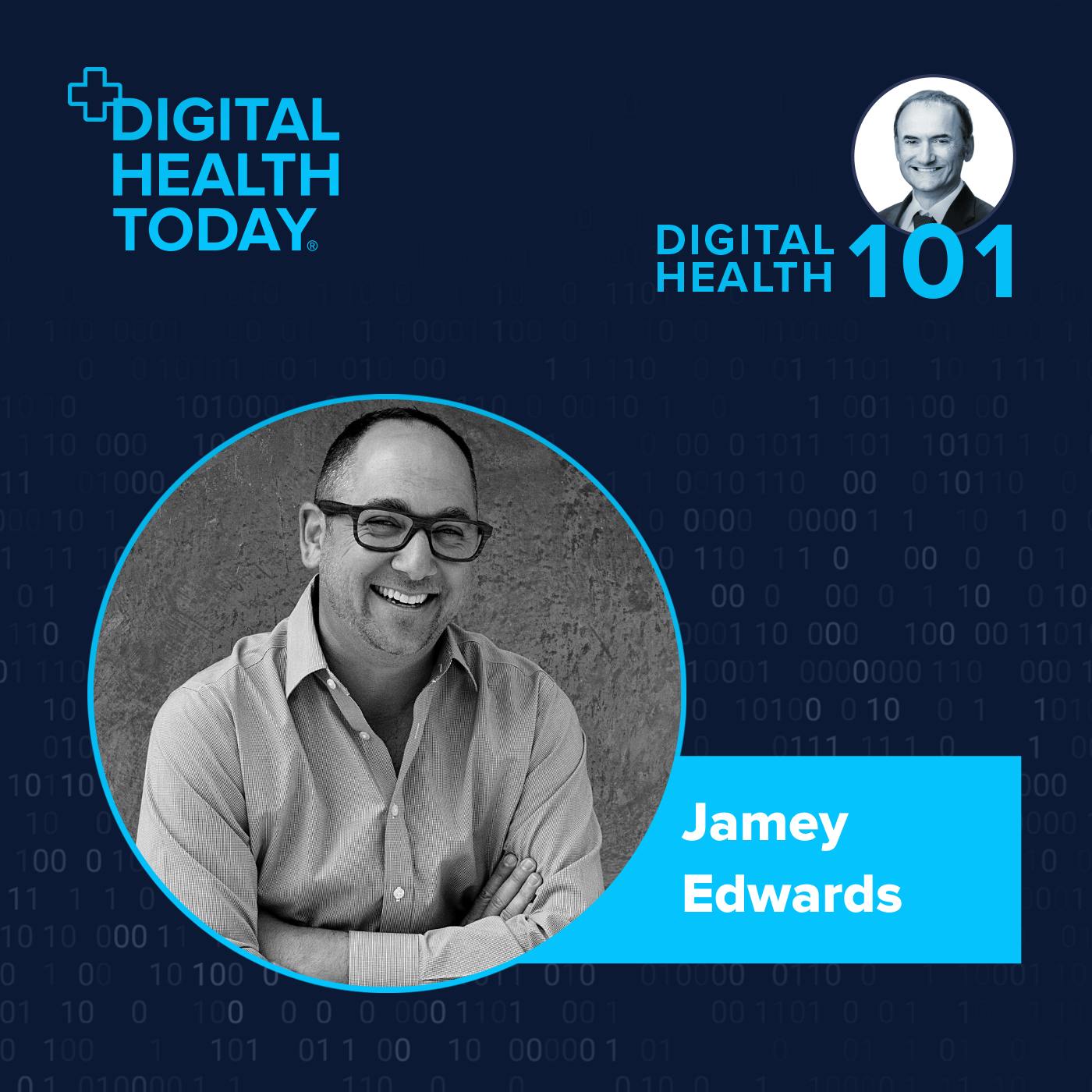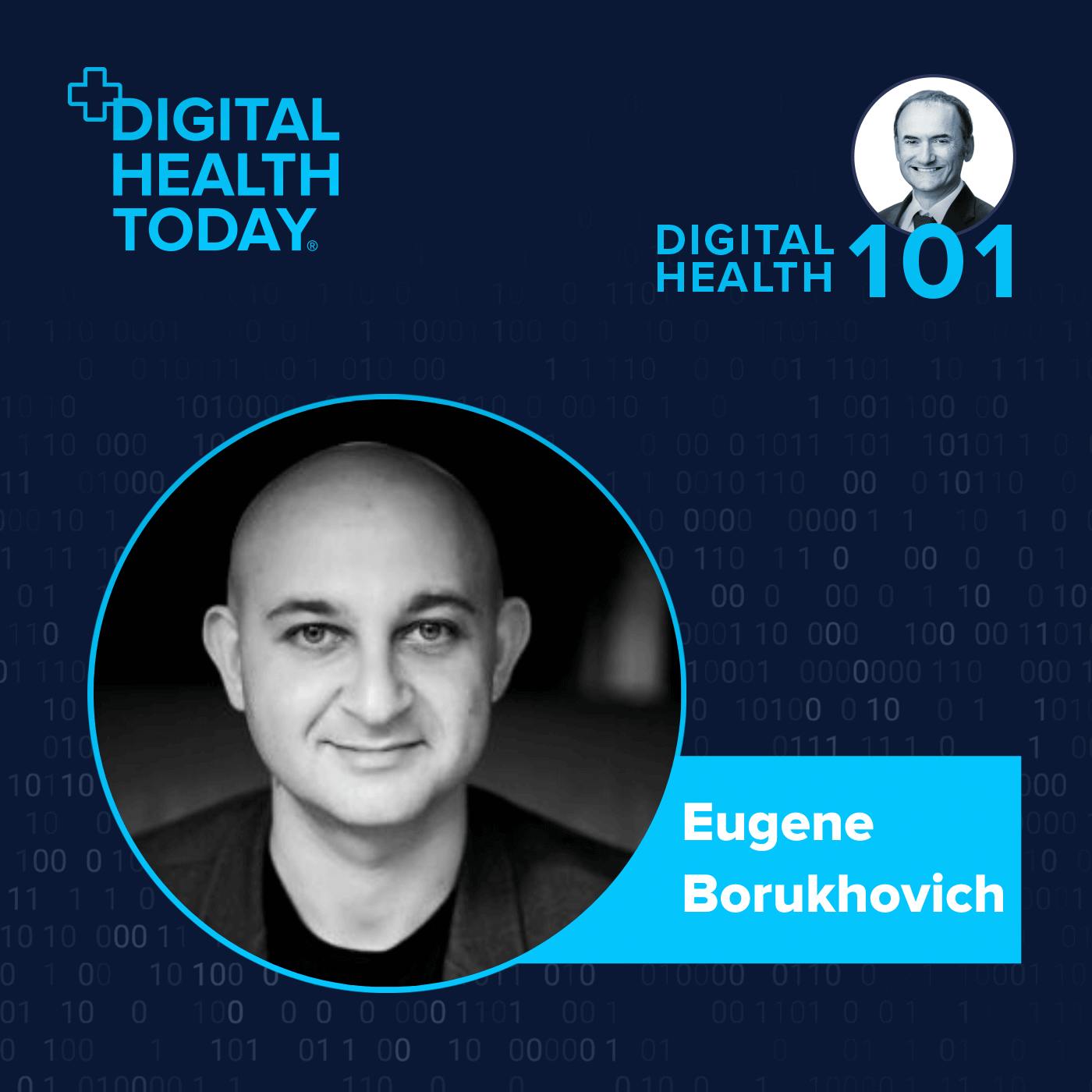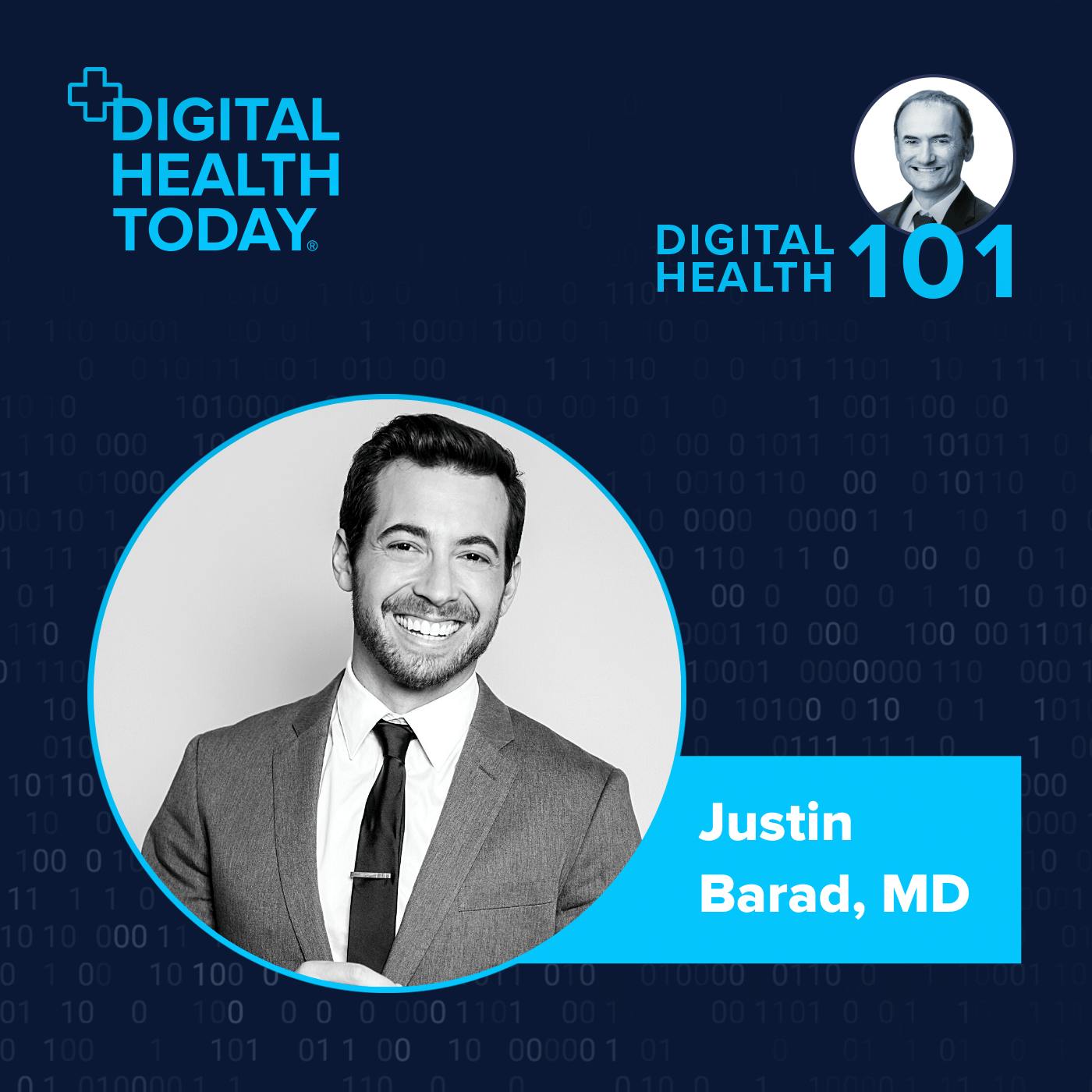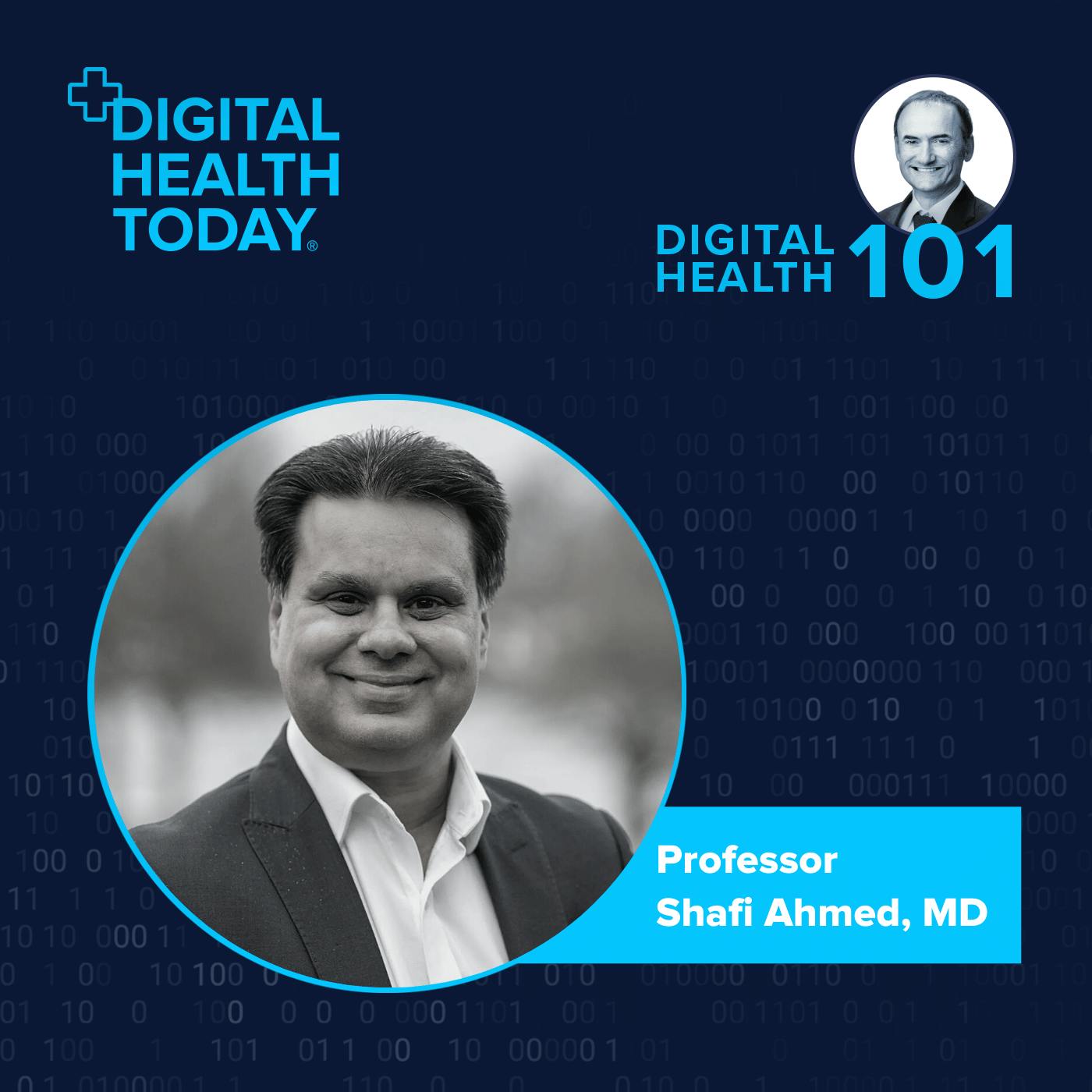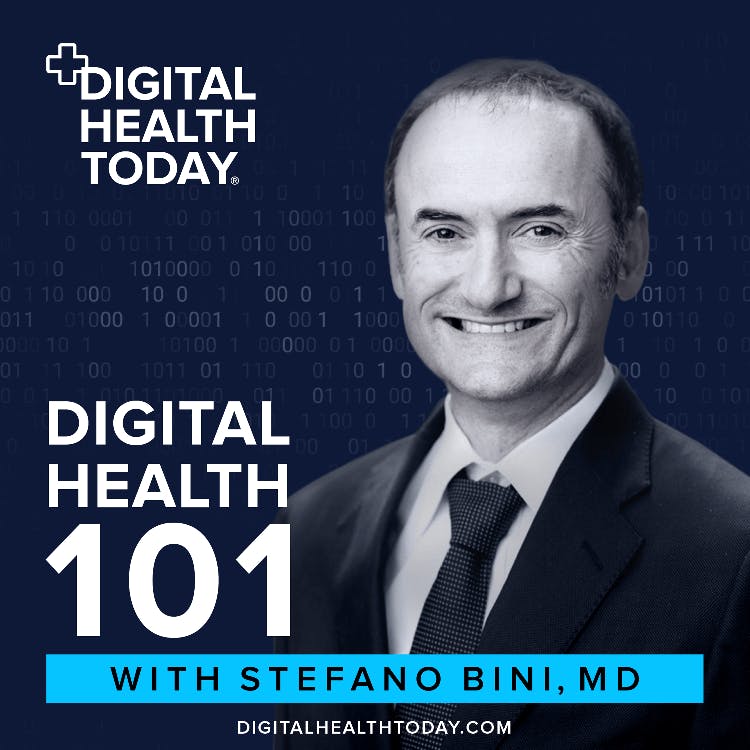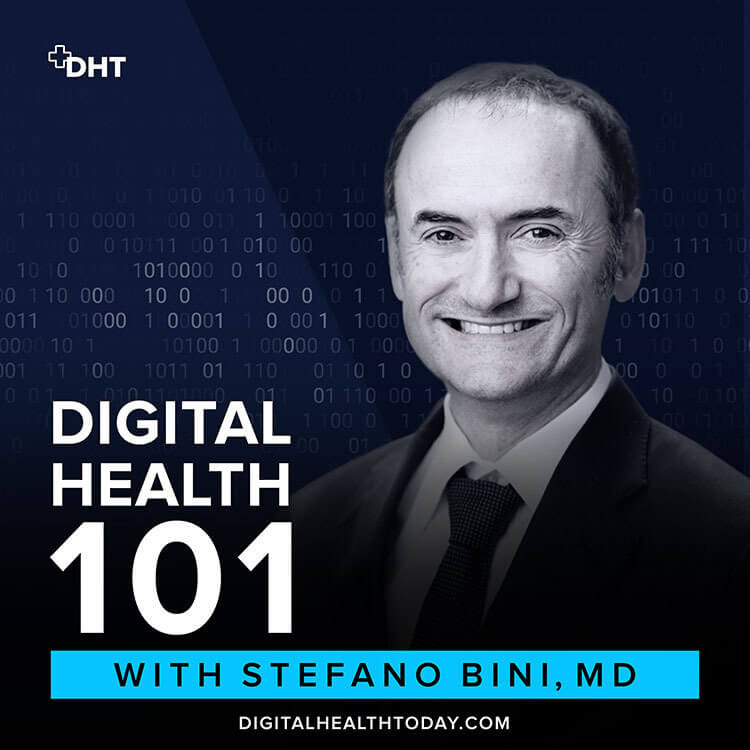
Digital Health 101
This podcast dives into the organizational and structural requirements for successful transformation to a new health paradigm.
All Episodes
What is Enterprise Blockchain? How is it Used?
This episode is all about what enterprise blockchain is and how it can be used!
We are honored to feature Radhika Inyegar, co-author of the book “Enterprise Blockchain Has Arrived”. She shares with us how the blockchain came about conceptually, the differences between proof of work versus proof of stake, the different roles for permission and permission-less systems, smart contracts and the impact it will have on healthcare. Blockchain is essentially a database that has multiple owners, so everyone sees and has access to the same information. Right now, blockchain is used in the non-PHI side of healthcare.
Blockchain is all about truth and transparency in the transactions involved, and their application to healthcare is going to change the game.
About Rhadika Inyegar
Radhika Iyengar is a TEDx and keynote speaker, author, Silicon Valley Woman of Influence, and a serial entrepreneur. She is Founding Partner at StarChain Ventures, a Silicon Valley-based venture studio focused on the convergence of advanced technologies including Blockchain, AI and IoT. She is also Managing Partner of DoubleNova Group, a global advanced tech advisory company based in Silicon Valley.
Radhika is a co-author of the critically acclaimed book Enterprise Blockchain Has Arrived. As an enterprise blockchain expert, she has advised companies globally in the healthcare, fintech and supply chain sectors. She is a member of the Government Blockchain Association as well as the California Gov Ops Blockchain Working Group, a task force advising California state legislature, where she has advised on a wide range of areas such as healthcare, life sciences and pharma supply chains, digital identity, privacy, sustainability, and food and agriculture supply chains. Radhika is an Advisory Board Member and Global Ambassador of Blockchain in Healthcare Today (BHTY), the world’s first peer-reviewed journal on blockchain in healthcare.
Key Take-aways
The Internet changed the world, and blockchain is on its way to do the same.
Blockchain is a distributed ledger technology which allows multiple owners to have ownership of the data that's within it.
Once a change is made in a blockchain, it is immutable.
In blockchain all of the blocks of information are tied to each other.
Blockchain does not store data, it stores the hash of the record.
Guest Links and Resources:
Connect and Follow Radhika on LinkedIn: https://www.linkedin.com/in/radhikaiyengar13/
Follow Radhika on Twitter: https://twitter.com/RIyengar13
Grab your copy of the book “Enterprise Blockchain Has Arrived” by Radhika Inyegar and Jorden Woods here: https://www.amazon.com/Enterprise-Blockchain-Has-Arrived-Deployments-ebook/dp/B07Z3LJCHW
March 30, 2022
What is Synthetic Data? How Can it be Applied in Healthcare?
What are the real-world applications for synthetic data? What power can it have? And... what is it exactly?
All of these questions and more are solved in this episode, featuring Dr. Michael Lesh, the CEO and founder of Syntegra. During his career he has always found ways to solve needs through technology, and that is what he and his team’s been doing with synthetic data. Starting by its definition, Michael walks us through how synthetic data could solve a lot of issues regarding privacy around medical records. In the end, synthetic data is a set of information that looks like the original but doesn’t have any patient information that could violate any restriction in place. Synthetic datasets could be solving a lot of problems in the healthcare setting that rise up when partnerships are trying to be made.
Even if you’re not a math geek, we know you will find this episode appealing; tune in and enjoy!
About Michael Lesh
Michael D. Lesh, SM MD FACC, is the founder and CEO of Syntegra and an Adjunct Professor of Medicine at the University of California, San Francisco. Until recently, he also served as Executive Director of Health Technology Innovation in the Office of Vice Chancellor there. Dr. Lesh combines a background in biomedical engineering and computer science from MIT with a career as a physician-scientist in cardiac electrophysiology. He received training at UCSF and University of Pennsylvania.
Dr. Lesh is an accomplished inventor and entrepreneur, having founded and served as CEO of a number of successful medical device companies, including Atrionix, Mitralife, Appriva Medical, Evera Medical and Middle Peak Medical, many of which were later acquired by leading life sciences companies. He also served as a director at HeartScape, Stentys, Abate, Cordance and KidneyCor.
Dr. Lesh has authored over 200 scientific papers, book chapters and books, and he is an inventor on over 250 patents, including the foundational method of atrial fibrillation ablation and left atrial appendage occlusion to prevent stroke.
Key Take-aways
Medical data has a lot of mandatory restrictions and privacy concerns.
Synthetic data intends to solve a problem regarding privacy inquiries with sharing.
De-identified data is very different from synthetic data.
Once you create a synthetic data set you can augment it easily.
A generative model will fill in missing data in the sets.
Guest Links and Resources:
Connect and Follow Michael on LinkedIn: https://www.linkedin.com/in/michaeldlesh/
Learn more about Syntegra.io here: https://www.syntegra.io/
February 15, 2022
What are Chatbots? And how can Chatbots be Used in Healthcare?
Today, we feature Manav Sevak, co-founder and CEO of Memora Health, a company that uses chatbots to help with the very complex task of sharing information between healthcare providers and their patients, or even healthcare systems. Healthcare is one of the most complex industries out there, with tons of information being transferred by the second. Chatbots are here to help this information be transferred easier between patients, providers and systems. He also walks us through how they use a decision tree.
Chatbots are changing the world and their application into healthcare is growing by the day. Tune in to this amazing episode with Mr. Sevak, you will enjoy it.
About Manav Sevak
Co-Founder & CEO of Memora Health, a health company using natural language processing technology to build the next-generation of outpatient care and modernize patient communication. He is interested in everything from health tech to computational biology to health policy.
Key Take-aways
The chatbot application on healthcare can improve patient access to information and resources.
Chatbots are automated systems that allow for some form of interaction asynchronously to take place.
Chatbots have one answer for one question only.
Chatbots can use incredibly complex decision trees according to the way they are built.
Any conversational system at the end of the day is really only as good as the data that you give it.
Guest Links and Resources:
Connect and Follow Manav on LinkedIn: https://www.linkedin.com/in/manavsevak/
Follow Manav on Twitter: https://twitter.com/mnvsevak
Know more about Memora Health on their website: https://www.memorahealth.com/
February 8, 2022
What is computer vision? How do computers see?
What can computers see, and what can they do with that information? These are just some of the few questions we answer as we learn more about our outstanding guest in this episode, Meghan Conroy.
Meghan shares how CAPTUREPROOF was born, what camera vision is, how it works, and its other applications. She discusses how her company adds value to healthcare through images, providing excellent examples of companies she has worked with. Meghan also shares her thoughts and insights on using camera vision in diagnostics and more!
Computer vision is a promising application and can be used to create a visual record of an improvement, so make sure to tune in and enjoy.
About Meghan Conroy
Meghan is the CEO & Founder at Captureproof Inc. Before CAPTUREPROOF, she also founded bH, a clinical trial photo management company. Her background in Physiology led her to work in big Pharma for many years.
Meghan is also a photographer, and her work was exhibited in Chicago, San Francisco, Paris, and London.
Key Takeaways
Through evolution, our brain was trained to read visual images in 13 seconds.
It takes our eye 150 milliseconds to blink.
Color can be a very compelling aspect of a diagnosis in medicine.
Visual data can solve so many problems in healthcare.
30% of our ER visits for patients over 65 are due to fall.
There are opportunities for diagnosis across disease states or specialties. Visual data crosses all barriers.
Resources
Website: https://captureproof.com/
LinkedIn: https://www.linkedin.com/in/meghan-conroy-281a97/
Twitter: @meghanconroy
December 8, 2021
How can you achieve Interoperability and protect privacy?
One of the significant problems in healthcare is the lack of interoperability. In this episode, we will find out what it is and how to solve it.
Today, we are privileged to feature Martin Aboitiz, CEO and Founder of Healthjump. This platform provides health data interoperability services. Martin discusses how his company helps solve interoperability in healthcare by extracting the data and putting it in a single model that they can control and make it accessible to other software, a novel solution. We cover the types of problems this innovative solution can be used for, and how it works while still maintaining HIPAA requirements. Martin also talks about the many other challenges in interoperability.
If you are experiencing interoperability concerns or would like to find out how Healthjump solves it, this podcast can answer that for you!
About Martin Aboitiz
Martin Aboitiz is an engineer, entrepreneur, and angel investor with extensive information technology and consumer products experience.
Currently, he is the CEO and Founder of Healthjump, a health data interoperability platform. Prior to Healthjump, he was the Founder and President of Intermedia Comunicaciones SA, one of the first ISPs in Argentina; becoming a corporate hosting and IT consulting company after the sale of the ISP division to SkyOnline in 2004.
Martin transitioned from engineering to venture management at Bun SA, an industrial snack food production and marketing company in Argentina acquired by Pepsi Foods International in 1993. As an angel investor, he has participated in multiple ventures in and out of the United States (most notable EXOS Inc sold to Microsoft and Telecom Americas LTD sold to Telmex.) He has served on various company boards of directors and industry trade group councils over the years and is a Regional Chair for the MIT Educational Council.
He holds MS and BS degrees in Civil Engineering from Colorado State University and Massachusetts Institute of Technology.
Key Takeaways
Healthjump is good at keeping the data living forever.
You need to have an objective.
Don't limit yourself by what you think is possible or not.
Understand your problem well: what do you want to achieve?
Resources
Website: https://www.healthjump.com/
LinkedIn: https://www.linkedin.com/in/martin-aboitiz-90a1447/
Twitter: @MartinAboitiz
December 1, 2021
Using AI in the Operating Room
In this episode, we are privileged to host Sanjeev Agrawal, President and CEO at LeanTaas. This is a healthcare software company that increases patient access to medical care. When Stefano first met Sanjeev at the first DocSF Conference, the company was just a start-up. Today, the company has grown into an established and well-funded company that is changing how we manage hospitals across the country.
Sanjeev recounts his healthcare entrepreneurial journal, which began when his team successfully solved a Stanford Cancer Institute problem. He discusses machine learning applications and gives excellent real-world examples of problems where machine learning can be applied. We also tackled the data they are looking for to solve problems and where machine learning is going in the future.
This conversation is fascinating, not just on how to solve complex healthcare problems utilizing accurate data, because there's more to it than that, so make sure to tune in!
About Sanjeev Agrawal
Sanjeev serves as the President and Chief Operating Officer for LeanTaaS. Sanjeev was Google's first Head of Product Marketing. Since then, he has led three successful startups - CEO at Aloqa (acquired by Motorola), VP Products & Marketing at TellMe Networks (acquired by Microsoft), and Founder & CEO at Collegefeed (acquired by After College).
Sanjeev graduated with a BS and MS in Electrical Engineering and Computer Science from MIT. He started his career at McKinsey & Company and Cisco Systems before joining Google. Sanjeev is a Forbes contributor and also writes on his blog at http://medium.com/@saagrawa. He is an avid squash player and has been named by Becker's Hospital Review as one of the top entrepreneurs innovating in Healthcare.
Key Takeaways:
LeanTaas cannot create volume, but it can help clinics and hospitals optimize patients physicians should be seeing.
The EHR has a historical record of all surgeries performed in the past by the block owner.
90% of a data science problem is the data. So science is important until you can extract meaning from it.
Most healthcare visits are not so simple.
Small data can make a world of difference.
Once you have clean data, then you can apply your algorithm.
Resources
Website: https://leantaas.com/
LinkedIn: https://www.linkedin.com/in/sanjeevagrawal2007/
Twitter: @saagrawa
November 24, 2021
Using AI in the Outpatient Clinic
In this episode, we are privileged to host the fantastic Dr. Rajiv Sivendran, Co-Founder and CEO at Apprentice Health. He is an expert in the simulation space and optimization of resources. Rajiv is driven by the desire to solve problems in healthcare, and the idea for his company started when he was doing his MBA at Harvard.
Rajiv explains simulations and modeling, and links that to resource allocation and logistics in healthcare. He also discusses queueing theory, starting simulations in healthcare, the different variables involved, and ways to collect the healthcare data needed for the simulation. We hyper-focus on the power of the simulation approach and where it is heading. Rajiv provides powerful examples of simulations and where they can and cannot be successful. We also cover the marketing, ROI side of simulation, and more.
There are many potential uses of simulations, and this conversation is an excellent start to learn about it and how you can use it in your clinic or hospital, so tune in!
About Rajiv Sivendran, MD
Rajiv Sivendran is the Co-Founder and CEO at Apprentice Health, a software that helps to deliver exceptional care by improving the use of their valuable resource - clinical time and space. Before Apprentice, he worked as an Attending Physician at Brigham and Women's Hospital and as a Clinical Fellow and Instructor of Medicine at Harvard Medical School.
Key Takeaways:
You have to understand the laws of nature that govern that specific niche.
A standard practice doesn't do simulation.
It is simpler to get started on something simple.
It is hard to build the data set in simulation.
Each sensor is uniquely identified to them when a patient comes in.
You can build your nuance into your simulation model. It could be super simple, or it could be super complex.
Every doctor obeys the same rule of queueing.
The model can take different inputs to provide outputs specific to practice.
There are so many variabilities in healthcare.
Resources
LinkedIn: https://www.linkedin.com/in/rajiv-sivendran-md-mba-1a519283/
Twitter: @rajiv_sivendran
Website: https://www.apprenticehealth.com/
November 17, 2021
What does patient engagement mean in healthcare, and how do you define it?
Todd Johnson’s work has always been about how we can make a patient’s experience more continuous. One of the most significant opportunities Todd recognizes in the use of these integration systems is behavior change. Information processing may be overwhelming, and this is why moving to digital systems will make this easier. The outcome is a win-win relationship for both patients and medical staff. Patients will have better clinical experiences; meanwhile, the team will save time.
Patient engagement is increasing over time with these technologies. Tune in to this episode to know much more about where we are headed.
About Todd Johnson
Todd Johnson is a serial entrepreneur committed to building innovative products that engage patients and connect them to their care teams. He builds strong companies on products that address market needs and offer long-term strategic potential from great ideas.
He is leading HealthLoop's evolution to become the foundation for GetWell Loop™ and managing the acquired Mountain View, Calif. office. Once the integration process is complete, his focus will influence GetWell Loop’s product development and sales strategy.
Todd holds a Bachelor of Administration in computer science from Cornell University.
Key Take-aways
The gold standard in integration is to have all the information and data from a patient available.
Integration and Data systems create a win-win relationship.
This transformation in-patient care requires leadership and a change in how we think about it.
When deploying this technology, patient engagement was variable.
Patients will use these apps when it’s a way to communicate with the medical team instead of following instructions from it.
Resources
Connect and Follow Todd on LinkedIn here: www.linkedin.com/in/toddjohnson10/
Learn more about the LearnMore GetWell Network here: https://www.getwellnetwork.com/getwell-loop/
Source: https://www.getwellnetwork.com/profiles/todd-johnson/
November 10, 2021
What is 'Interoperability' in healthcare and why is it important?
The systems that store your health records across different providers are probably not talking to each other. Even if they are, it certainly didn't happen by accident.
This is a problem Niko Skievaski is working to solve.
Interoperability is a technical term that comes from outside of healthcare. The meaning of it is when two or more systems can share data with each other.
Niko explains that there are three levels of Interoperability:
The first level is one in which data is shared between systems or providers.
The second level is within a single care setting, known as Integration.
The last and third one is giving patients their data or Patient Authorized data Access.
The topic of data is something we could discuss for hours - but we don't have that kind of time! Instead, this episode is a greatly simplified way to understand it!
About Niko SkievaskiNiko Skievaski is a co-founder of Redox, a modern API layer for EHR integration. Before Redox, he co-founded a co-working space and business incubator in Madison that attracts fellow former-Epic employees interested in startups. With Redox, he has raised $4 million to make an API that works as a bridge between healthcare data and the software that uses it, translating patients' records across platforms. Niko has a Bachelor of Arts/Science from Arizona State University and a Master of Arts from Boston University.
Key Take-aways
HL7 is the most used integration standard used.
HL7 can be understood as a language.
Integration space needs to be bi-directional.
API stands for Application Program Interface
Interoperability is in the middle of data governance and the legal part of sharing.
A patient’s data could be hundreds of pages long.
We have information at our fingertips during this century.
Resources
Connect and Follow Niko on LinkedIn here: https://www.linkedin.com/in/skievaski/
Know more about Redox here: https://www.redoxengine.com/
Medcity News: https://medcitynews.com/author/nikoskievaski/#:~:text=Niko%20Skievaski%20is%20a%20co,Health%20IT%2C%20Startups
Forbes: https://www.forbes.com/profile/niko-skievaski/?sh=1d65e0254ddd
November 3, 2021
How to Deliver Healthcare in 250+ Languages
The importance of understanding each other: video remote interpreting platforms.
Health disparities are as broad and different as a color palette. Jamey Edwards works to improve them with Cloudbreak Health. Trust in the patient-provider encounter is essential and necessary in the 21st Century. This is why he started providing language services to enhance these barriers in medicine. The pandemic has caused everything to turn towards digital solutions. What used to be an in-person visit, now is an email or a phone call. This is where telemedicine is headed: the simplification of processes from the providers’ side. Also, the collaboration between institutions will boost to improve a single patient's experience.
Join Stefano and Jamey in this beautiful conversation about how technology will #humanizehealthcare!
About Jamey Edwards
Jamey is on a mission to fix healthcare. Jamey has founded and co-founded companies in hospital management, physician outsourcing, and telemedicine as a serial entrepreneur. He is currently the CEO of Cloudbreak Health, a leading unified telemedicine company currently performing over 130,000 encounters per month in over 1,900 healthcare venues nationwide.
Jamey is a member of the Global Army of Healthcare Transformers of StartUp Health and is focused on two main moonshots of increasing access to care and driving the cost of care to zero. He graduated as a Tradition Fellow from Cornell University in 1996 & received his MBA from Cornell's Johnson Graduate School of Management in 2003.
Key Take-aways
The difference in Language is one of the most significant medical disparities across the globe.
Telemedicine is bringing patients closer to doctors.
With the advancement of technology, collaboration between institutions will be easier.
Technology is constantly changing and working to improve the patient’s experience.
Resources
Connect and Follow Jamey Edwards on LinkedIn: https://www.linkedin.com/in/jameyedwards/
Follow Jamey Edwards on Twitter: https://twitter.com/jameyedwards
Visit Cloudbreak Health on the web: https://www.cloudbreak.us/
Follow Cloudbreak Health on LinkedIn: https://www.linkedin.com/company/cloudbreak-health/
Follow Cloudbreak Health on Twitter: https://twitter.com/CloudbreakHLTH
Follow Stefano Bini on Twitter: http://twitter.com/sbinimd
Follow Personalized Arthroplasty Society: https://www.personalizedarthroplasty.com/
October 27, 2021
What is a Digital Therapeutic? And how do they work?
Let's dive into digital therapeutics! In this episode of Digital Health 101, we feature one of our good friends and digital health leaders: Eugene Borukhovich. Eugene is a serial intra & entrepreneur, executive, venture builder, and podcast host; the list is long and impressive!
Eugene starts by answering the question "what is a digital therapeutic?" We dive into the history of digital therapeutics ('DTx'), the different forms DTx can take, the breadth of application, and some great examples of companies who are creating real solutions with evidence, engagement and business models.
We also cover the impact DTx can have on accessing care, data collection, affordability, reimbursement and more.
Eugene also discusses the work of YourCoach.Health and how it supports health and wellness coaches to manage their business from end to end.
To learn more about digital therapeutics and Eugene's thoughts and insights, tune in to this episode!
About Eugene Borukhovich
Eugene is a serial intra and entrepreneur, executive, venture builder, speaker, and board advisor focusing on digital health. He is a Chairman and Founding Board Member at YourCoach Health and founder of Initium Impact Ventures. Prior to YourCoach, Eugene served as a Global Head of Digital Health at Bayer. He has also co-founded and sold a doctor rating startup and a consulting company.
Key Takeaways
A DTx delivers medical interventions directly to evidence-based patients, clinically evaluated to do the above: treat, manage, and even prevent different diseases and disorders.
The business models of DTx are being explored.
DTx promises to be affordable and offers digital access to a much larger population. All you need is a smartphone.
When the pandemic hit, emergency use went straight to the market for many behaviors and mental health-related digital therapies.
When people need help, that empathy is vital.
Mentions
YourHealth.coach
Akili Interactive
Welldoc
Omada
Pear Therapeutics
Big Health
Guest Links and Resources
Connect and Follow Eugene Borukhovich:
LinkedIn: https://www.linkedin.com/in/healtheugene/
Twitter: http://twitter.com/HealthEugene
Eugene's Podcasts:
Digital Therapeutics Edition on Digital Health Today: dtxpodcast.com
Digital Therapeutics Edition on Health Podcast Network: https://healthpodcastnetwork.com/show/digital-health-today-digital-therapeutics-edition/
October 20, 2021
What is Virtual Reality? And how can it be used in healthcare?
In this episode we do a deep dive into virtual reality, and we are honored to feature a doctor synonymous with VR, Dr. Justin Barad.
In this interview, Justin defines virtual reality, shares some background context and history, and discusses some of the advantages of training in the VR world. He also talks about VR in healthcare, especially in surgery, pain, anxiety management, psychiatric space, and optometry space. Justin also shares his thoughts on possible areas of VR applications, how technology should be used in healthcare, and some studies showing a significant increase of skill transfer in the use of Osso VR.
Learn more about virtual reality and its impact on healthcare in this exciting episode of DH 101. Please tune in!
About Justin Barad, MD
Justin is the Co-Founder and CEO at Osso VR, a surgical training and assessment platform that teaches medical procedures in a highly realistic virtual environment. He is a board-eligible orthopedic surgeon with a Bioengineering degree from UC Berkeley and an MD from UCLA, where he graduated first in his class. He completed his residency at UCLA and his fellowship in pediatric orthopedics at Harvard and Boston Children’s Hospital.
Key Takeaways:
There's too much to learn in healthcare, and doctors cannot know it all.
There was an accelerating need for some way to train people remotely without needing to be physically together and without having access necessarily to patients, cadavers, or equipment.
The VR platform is broadly applicable.
In healthcare, it takes a village, and everything's a partnership.
Have a realistic expectation of what VR is and isn't.
Working with technology is a skill set. First, you need to have a basic understanding of how the software works.
We need to make space and provide education around technology and integrate it more.
We need to start thinking about how we can systematize creating the next generation of healthcare technologies.
Connect and Follow Dr. Justin Barad on LinkedIn, Twitter, and the Web
LinkedIn: https://www.linkedin.com/in/justinbaradmd/
Twitter: @jbhungry
Website: https://ossovr.com/
October 13, 2021
Shafi Ahmed on Democratizing Surgical Training Through Virtual Reality
In this episode, we chat with Professor Shafi Ahmed about virtual reality and its application to democratize surgical training and surgical care.
Through virtual surgeries, Dr. Ahmed is changing the medical approach to technology. Digital surgery is one of Dr. Ahmed’s main focus points. This has been something that hasn’t been around for long. He also discusses extended reality and technology specialties in the healthcare field.
Join the first episode of Digital Health 101 and discover the world-changing power of virtuality and tech in medicine!
About Shafi Ahmed
Professor Shafi Ahmed is a multi-award-winning surgeon, teacher, futurist, innovator, and entrepreneur. He is a 3x TEDx and an international keynote speaker. Prof. Ahmed is faculty at Harvard Medical School, Bart’s Medical School, Imperial College London, Queen Mary University, Bradford University, and Singularity University, where he teaches medicine, innovation, and digital transformation.
He is currently a member of the NHS Assembly advising on the long-term plan. He was previously an advisor to the Abu Dhabi Ministry of Health to help deliver innovation and digital Health and is the Vodafone UK Connected Health Ambassador.
Key Take-aways
Extended reality is a concept referring to every combined (real and virtual) environment.
Digital surgery is still an innovative strategy.
People, specifically students, get more engaged when innovative tools are used.
In VR and AI, one little piece becomes part of a more extensive structure for learning.
Technology will highlight gaps that we can’t see right now in surgery.
Guest Links and Resources:
Connect and Follow Dr. Ahmed: LinkedIn https://www.linkedin.com/in/professor-shafi-ahmed-7114a260
Follow Dr. Ahmed on Twitter: https://twitter.com/ShafiAhmed5
Know more about Dr. Ahmed on his website: https://www.professorshafiahmed.com/
October 6, 2021
Trailer: Welcome to Digital Health 101
Welcome to the Digital Health 101 podcast. On this podcast, we explore and break down the building blocks of digital health, one technology at a time.
We speak with experts to understand the fundamentals of how these technologies work.
We take complex topics and present them in simple clear terms.
We hear about the experiences of the innovators who are pushing the boundaries of technology and the clinical leaders who are putting them to use.
Throughout this series, we'll explore how these technologies impact health access and health equity.
Our goal is to keep anyone working in the healthcare space informed about the latest technologies, how they work and how they can be put to use whether that's on the patient's wrist, at the bedside or in the surgical suite.
Follow this podcast on your favorite podcast player and sign up for our newsletter at Digitalhealthtoday.com, and thanks for joining us on the Digital Health 101 podcast.
September 29, 2021
About Digital Health 101
This podcast dives into the organizational and structural requirements for successful transformation to a new health paradigm.
Join Stefano Bini, MD and his guests as they explore the true pain points in healthcare, and how digital technologies can be developed and applied to help solve them. Each episode considers the effectiveness and limitations of current models, as well as the potential and capability of new technology and practices that can improve or replace them.
Host

Professor Stefano Bini, MD
Professor and Host
Dr. Bini is a Professor of Orthopedic Surgery specializing in hip and knee replacement and the Founder and Chair of the Digital Orthopaedics Conference, San Francisco (DOCSF). He consults for start ups and multinational organizations and has authored a book on change management. Dr. Bini's appointment is with the department of Orthopedic Surgery at the University of California San Francisco (UCSF), ranked in the top 6 departments in the US. Current research interests include quantifying the impact of digital health on orthopedic care delivery, change management strategies in health care, and improving the results of total joint surgery by helping to challenge long held assumptions in surgical techniques. Stefano also serves on committees for national orthopedic organizations (AAHKS, AAOS), is an Associate Editor for Arthroplasty Today, and has delivered over 100 lectures nationally and internationally on both clinical and digital orthopedics.
Dr. Bini is a Professor of Orthopedic Surgery specializing in hip and knee replacement and the Founder and Chair of the Digital Orthopaedics Conference, San Francisco (DOCSF). He consults for start ups and multinational organizations and has authored a book on change management. Dr. Bini's appointment is with the department of Orthopedic Surgery at the University of California San Francisco (UCSF), ranked in the top 6 departments in the US. Current research interests include quantifying the impact of digital health on orthopedic care delivery, change management strategies in health care, and improving the results of total joint surgery by helping to challenge long held assumptions in surgical techniques. Stefano also serves on committees for national orthopedic organizations (AAHKS, AAOS), is an Associate Editor for Arthroplasty Today, and has delivered over 100 lectures nationally and internationally on both clinical and digital orthopedics.
